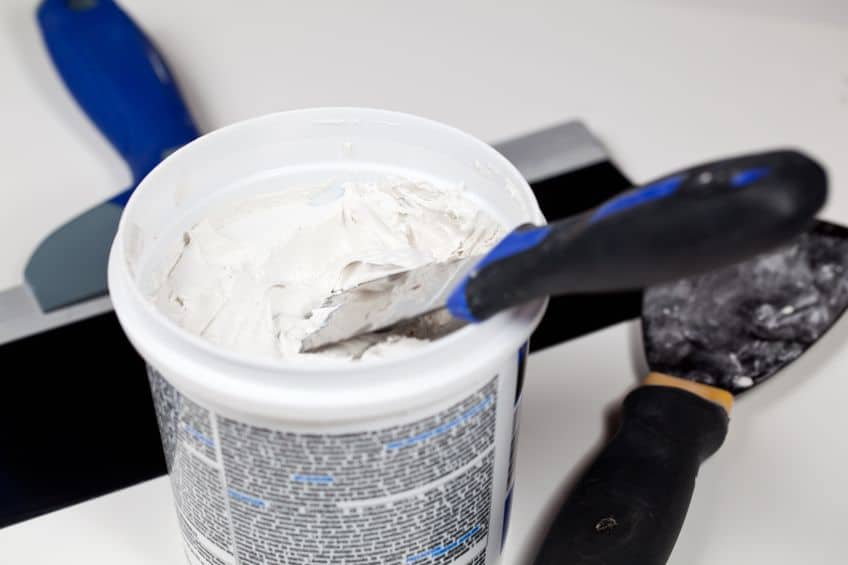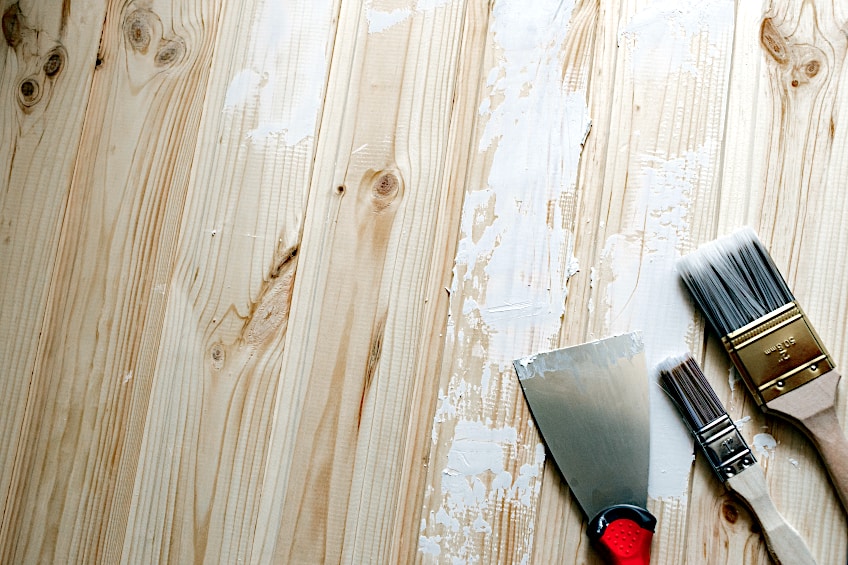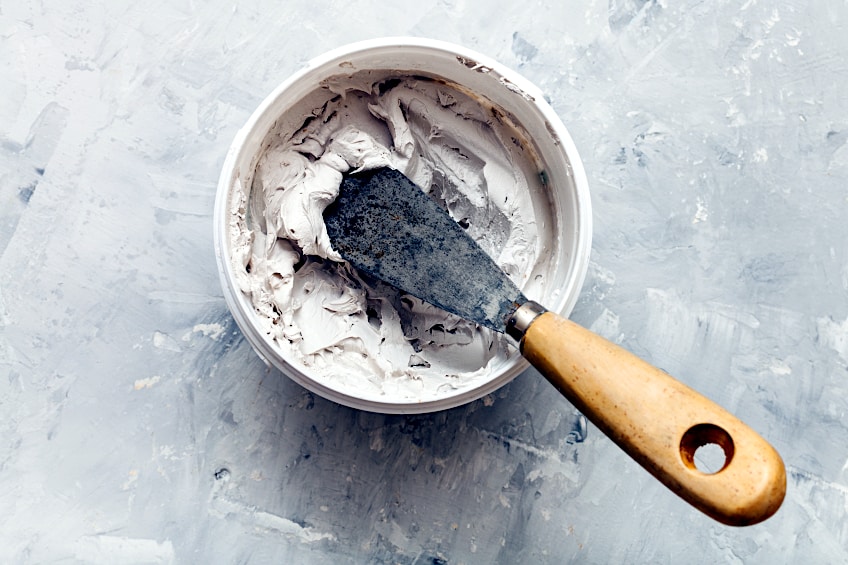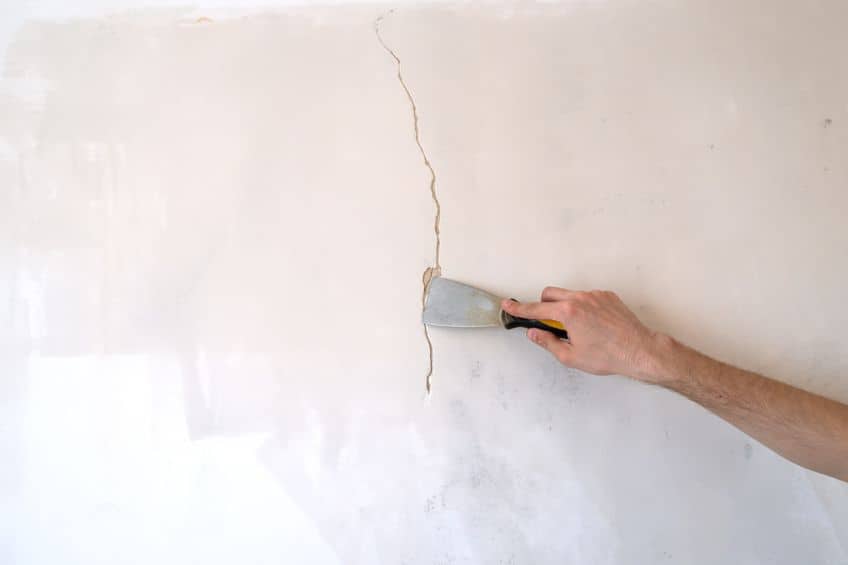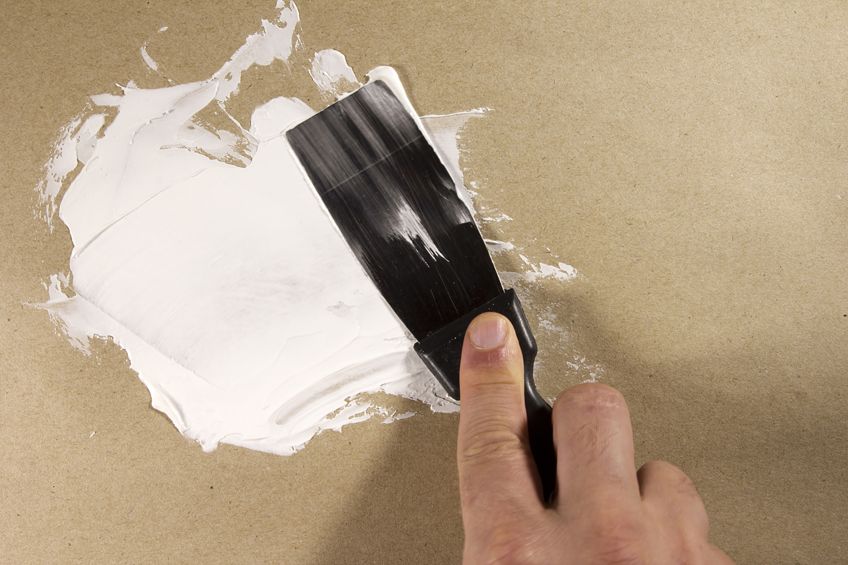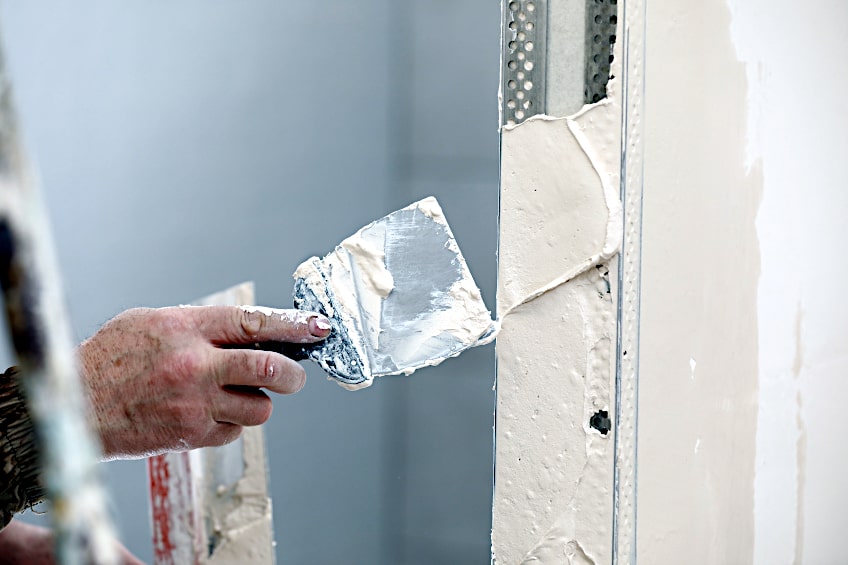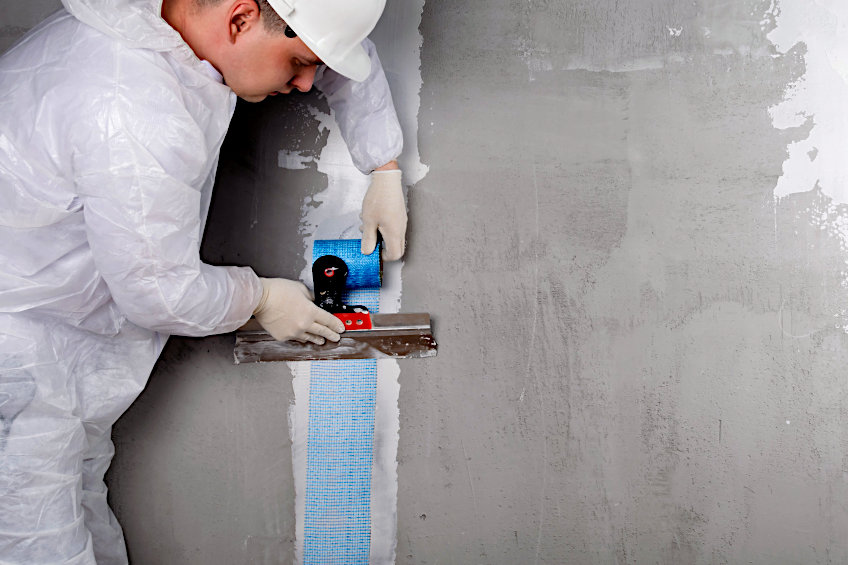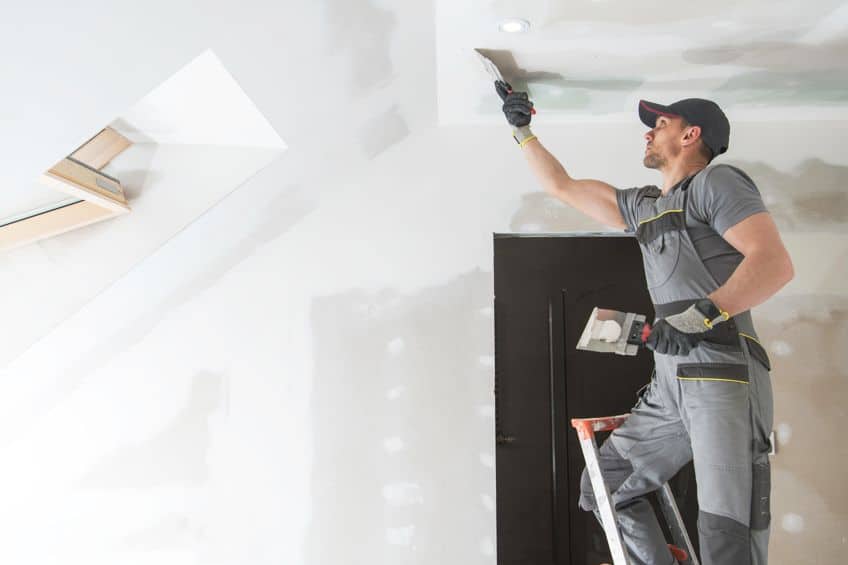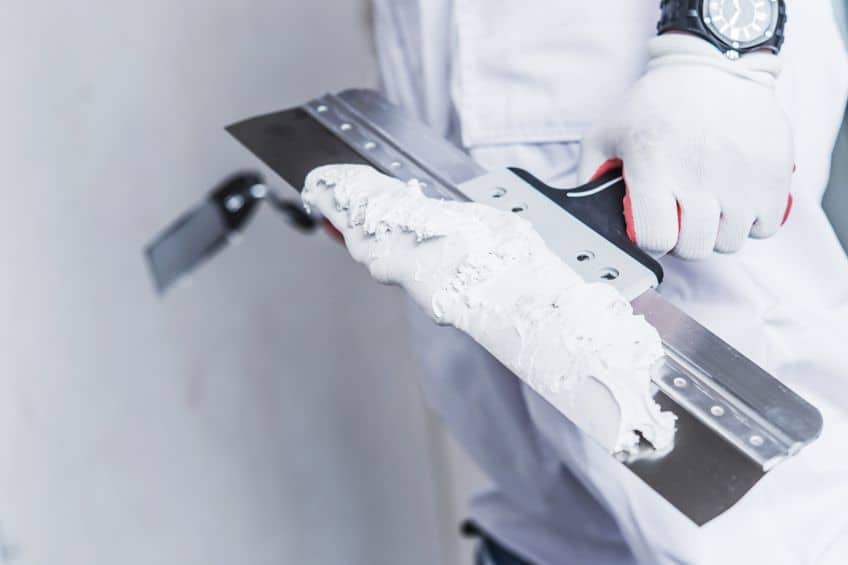Spackle vs. Joint Compound – When to Use Which Filler
This post may contain affiliate links. We may earn a small commission from purchases made through them, at no additional cost to you. You help to support resin-expert.com
Whether you’re preparing some drywall for painting or repairing a hole in a wooden workpiece, spackle, and joint compound have your back! Many people that aren’t familiar with spackle and joint compound would say that they are the same thing and can be used interchangeably. However, these substances are actually quite different and should not be used for the same applications. With that being said, let’s have a look at the spackle vs. joint compound debate, what each substance is, what they are used for, how they work, and where they can be used interchangeably.
Table of Contents
Spackle vs. Joint Compound: What Are They?
Is joint compound the same as spackle? Spackle and joint compounds are functionally similar. They are both white, paste-like compounds that can be used on various materials in order to fill or conceal recesses, gaps, and holes. They are applied using a putty knife and once they have dried, they are both usually smoothed out using a sanding block or some good old-fashioned sandpaper.
Both of these substances have been used for around the last 100 years to assist in repairing or concealing blemishes on surfaces and have proved to be invaluable to professional contractors and DIY enthusiasts alike. Before the advent of either of these materials, one would have to find far more creative ways of correcting their mistakes.
Is joint compound the same as spackle though? A joint compound is usually used on the surface of drywalls, whereas spackle is generally used to fill things like nail holes and imperfections on the surface of wooden workpieces. As you can see, it would be easy to think that these two can be used interchangeably, but they are more unique than they first appear. This doesn’t mean that they cannot be used interchangeably though, at least not both ways.
Now you might be asking “can I use spackle instead of joint compound?” While joint compound can be used for the same applications as spackle, spackle cannot be used for the same applications as joint compound. Pretty interesting right? That being said, let’s have a look at spackle and joint compound individually to see how they stack up against one another.
What Is Spackle?
Before we compare it to joint compound, what is spackle exactly? Spackle is essentially a substance used to fill holes in wood created by drills, nails, screws, and essentially anything else capable of taking a chunk of wood out of a board. Spackle was invented in the United States in the late 1920s and was patented by the Muralo Company as paste that could be used to fill voids in various surfaces, but primarily as a wood filler.
This begs the question, if spackle and joint compound aren’t the same things, are spackle and wood filler the same thing? Unfortunately not, but spackle and wood filler have greater interchangeability compared to spackle and joint compound. Wood filler is designed to stick to wood and wood alone, whereas spackle has a bit more versatility.
There are different types of spackle available too. Primarily, there are four types of spackle available today that have been designed for specific applications, and while these can sometimes be used interchangeably it is always best to use them for their intended purpose. Here are the four types of spackle you’ll encounter and what they’re designed to be used for.
Lightweight Spackle
As the name suggests, this type of spackle is used for light-duty applications. Since spackle is generally used as a void filler for wooden workpieces, this one is best suited for smaller holes that might arise as a result of rigorous sanding or from the removal of nails and screws. This type of spackle consists primarily of sodium silicate and general duty adhesives.
Standard Spackle
Standard spackle is the type you would use to fill medium to large voids on the surfaces of wooden or sheet rock workpieces. The consistency of this spackle type is noticeably different from lightweight spackle and they cannot be used interchangeably. This spackle is more “paste-like” compared to lightweight spackle, preventing it from running when applied in large quantities.
Vinyl Spackle
Vinyl spackle is arguably the most versatile of all the spackle types and can be used on a variety of surfaces including wood, plastic, drywall, and even stone! Vinyl has elastic compounds in its composition, giving it a unique consistency and adhesive properties. Vinyl spackle can be challenging to use as it cannot simply be mixed and applied directly to the surface of your workpiece.
Epoxy Spackle
Epoxy spackle has some of the strongest adhesive properties compared to all of the other spackle types we’ve mentioned so far. Epoxy spackle is oil-based and is capable of repairing cracked wood when applied correctly. Epoxy spackle can be expensive compared to the spackle types mentioned previously, and can only be used in conjunction with oil-based paints and stains.
Epoxy spackle also dries very quickly compared to most other spackle types.
Pros and Cons of Spackle
While spackle is widely used and is quite a versatile tool, there are some things that spackle simply isn’t good at. That being said, we’ve prepared a short list of the pros and cons associated with the use of spackle. Remember that even though it might seem like spackle and joint compound are the same thing they are not and should not be used interchangeably. Spackle is generally a beloved product in the craft of woodworking and home improvement due to its versatility and ease of use. There are many other factors that make spackle popular but let’s have a look at a few of the more obvious ones that make it the product of choice for many crafters and contractors the world over.
For one, spackle saves you a lot of time. How? Spackle dries very quickly, roughly 30 minutes to be precise, and therefore can save you quite a bit of time when you’re working on a time-sensitive project. When compared to the full 24 hours joint compound takes to dry and cure, it’s obvious why newcomers to wood crafting often think they can be used interchangeably.
Spackle is also used because it can be easily integrated into the surface of the workpiece. Once the spackle has had the opportunity to dry completely it can also be sanded and even painted over, which means the repair will be indistinguishable from the rest of the surface. This seamless repair is primarily why this spackle is so popular. Lastly, spackle is extremely easy to use. Light and standard spackle in particular don’t require an awful lot of preparation aside from the surface of your workpiece being clean, which means it can be applied quickly and simply allowed to dry. Compared to joint compound, it provides a quick and easy fix which has seen it soar in popularity in recent years.
While there might be a lot of pros to using spackle to repair the surface of your workpiece there are also a lot of cons. What are the cons of using spackle though? Well, for one, it might not be as versatile as you think it is. Conventional spackle such as standard and lightweight spackle cannot be used on the same number of surfaces as joint compound.
Additionally, spackle’s quick dry time can count against you too. This is especially true if you realize that you’ve made a mistake, as you’ll have to chip away at the repair you’ve made, clean out the recess, and then reapply it. If you’re trying out a new project or one you have little experience with, it is best to use the joint compound to ensure you have enough time to rectify any issue that pops up.
Another thing to consider is the finish that comes with using spackle. Compared to join compound that provides a sleek, shiny finish, spackle provides a rough, porous finish that can be tough to conceal, especially when applied in large volumes. This can mean you need to touch up the surface which can be tedious and time-consuming.
- Dries quickly
- Easy to use
- Can be sanded
- Readily available
- Multiple options to choose from
- Can force you to work quickly
- Can produce a porous finish
- Basic spackle lacks versatility
- Cannot be applied in large volumes
How Do You Use Spackle Effectively?
It doesn’t take a lot of effort to use spackle to fill a void in a wooden surface or drywall. All that you need to do is sand the surface around the hole lightly with some fine grit sandpaper. Don’t worry too much if you remove some of the finish along with it, just ensure that the surface of the recess is flush and ready to receive the spackle.
Next, get some spackle on the edge of your putty knife and use it to plug the hole. Your goal here should be to use just enough spackle to fill the void without too much protruding out of the hole. Once your spackle has been inserted all you need to do is wipe the remaining spackle away by sliding your putty knife across the surface of your workpiece and allowing it to dry completely before priming and painting your workpiece.
As we mentioned previously there isn’t much that goes into effectively applying spackle aside from ensuring that the surface of the recess has been sanded. You should also try to be as conservative as possible when applying your spackle as any excess that’s removed once the void has been filled will essentially be unusable unless you have other repairs to make.
What Is Joint Compound?
Joint compound, much like spackle, is one of the most widely used repair and resurfacing substances on the face of the planet. What is joint compound though? Essentially, joint compound is a mud-like substance consisting of limestone, gypsum, perlite, mica, and clay that is often used to coat the surfaces of drywall.
Joint compound is commonly referred to as drywall mud thanks to how its consistency strongly resembles mud. It can be easily spread on small and large surfaces, but is typically used to coat the surfaces of full-size drywall sheets after installation. Joint compound serves an important purpose in the construction of drywall, namely, to conceal joints in order to provide additional insulation.
What is joint compound used for in everyday applications though? Well, aside from concealing the joints between drywall sheets, it provides a uniform, flush surface that can then be sanded, primed, and painted. Why is this necessary? Exposed drywall tends to absorb primer and paint a bit too much, resulting in a blotchy, uneven paint job.
When compared to spackle it is generally used to resurface large surface areas instead of spot repair work. This doesn’t mean that joint compound cannot be used for repairs but considering its longer dry time it wouldn’t be the best tool for the job. That being said, joint compound is usually reserved for the resurfacing of larger workpieces. Here are some of the types of joint compound you could encounter.
All-Purpose Joint Compound
As the name would suggest, this type of joint compound can be used for pretty much any stage of the application process. Whether you’re applying your first coat of joint compound, sealing the seams of your drywall, or applying a finishing coat, this type of joint compound can do it all. That being said, it is ill-suited to some applications that require more binder, such as the sealing of joints.
Topping Compound
While general purpose compound is suitable for all phases of the application process, topping compound is used to create a finishing layer after the first three layers of compound have been applied. Topping compound generally doesn’t have the same level of adhesion as some general-purpose compound but this depends on the quality and type of topping compound you get.
Unlike general purpose, joint compound topping compound is sold in a dry powder form, which you’ll then mix with some water in order to get your desired volume and consistency. The topping compound is designed to make your surface as smooth as possible, reducing the time and effort needed to sand your surface before priming and sanding take place.
Taping Compound
If the name of this joint compound doesn’t give it away, taping compound is generally used in conjunction with joint tape to ensure that the joints between drywall sheets are sealed correctly. Taping compound bonds with the join tape ensures that there are no gaps once it dries. This compound dries rather hard and can be a challenge to sand once it does so.
Quick-Setting Compound
If you’re looking for a joint compound that sets in the same way that spackle does then a quick-setting compound is probably right up your alley. Quick-setting compound is generally used for quick repairs, or on a project where you need to apply multiple coats of joint compound in a short period of time. Generally, this type of compound is used to make timely repairs on drywall surfaces that would otherwise take an entire day.
Like topping compound, quick-setting compound is sold as a powder which is then mixed with water in order to create a paste. This paste is then applied to the affected area where it undergoes a chemical reaction that solidifies it. Always ensure that you follow the manufacturer’s instructions when working with this type of joint compound.
Pros and Cons of Joint Compound
There is no such thing as the perfect concealer, and just like spackle joint compound has some pros and cons associated with its use. Choosing the right substance for your project is important, so let’s have a look at some of the pros and cons associated with joint compound. Joint compound is rather long-lasting and can be used on a wide range of surfaces. In fact, while spackle cannot be used for the same applications as joint compound, joint compound can be used for all of the same applications as spackle. That being said, you probably wouldn’t use joint compound for the same applications as spackle.
Additionally, the consistency of joint compound is entirely different from that of spackle, which allows it to be spread out over a larger surface area. This means that it can be used to repair, conceal, and resurface larger surfaces without becoming too watery or drying out before you’re able to complete the application process.
Joint compound can also be used in all the phases of finishing your drywall. Whether you’re skimming, taping, patching, filling, or repairing, there is a joint compound for essentially anything you’d like to do with drywall. That being said, joint compound creates a smooth, almost shiny finish which is why professionals prefer it over spackle.
While joint compound might seem like the objectively better option of the two, there are some drawbacks to using this substance. One of the most obvious downsides is that general-use joint compound takes far longer to dry compared to spackle. This is not ideal if your project is time sensitive in nature. Another thing to keep in mind is that joint compound cannot be used to repair any surface that will be situated outdoors. It also cannot really be used to spot repair a surface since joint compound generally takes around 24 hours to dry and cure completely before it can be primed and painted, which isn’t ideal.
Finally, joint compound is usually sold in quite large volumes, at least when compared to spackle. This means that you’ll likely be forced to buy more than you need unless you’re able to get some from a friend. This can lead to a lot of waste if you’re just resurfacing one sheet of drywall, or would like to do a spot repair. Additionally, joint compound will not dry in high humidity.
- Easy to use
- Can be spread over a large surface area
- Can be used for every phase of the finishing process
- Creates a smooth, professional finish
- Can be sanded and molded
- Cannot be applied in humid environments.
- Very long drying times
- Only sold in large volumes
- Not ideal for spot repair work
- Cannot be used on a workpiece that will be outdoors
How to Use Joint Compound Effectively
Joint compound performs best when applied in multiple layers. Once your drywall has been erected, mix your joint compound and ensure that the surface of your wall is clean. Next, get some joint compound on an applicator and fill in the joints using your joint compound and your joint tape, then allow it to dry for the manufacturer’s recommended time period.
Once the appropriate time has elapsed, use a sanding block to carefully and evenly sand the sections where the compound has been applied. Finally, mix on some more compound and apply an even layer over the entire surface of your drywall. Allow it to dry and cure completely, after which you are free to sand it evenly and apply a layer of topping compound before priming and painting.
Now that you know the difference between joint compound and spackle, what each is made of, what each is used for, some of the pros and cons of each, and how to use them effectively, it’s time for you to get out there and put your newfound knowledge to the test! Always wear the appropriate personal protective gear when working with either, as the dust produced from sanding these substances can cause discomfort if inhaled.
Frequently Asked Questions
Can I Use Spackle Instead of Joint Compound?
Considering that they’re always confused with one another, can you use spackle instead of joint compound? Well, no. While joint compound can be used as a substitute for a spackle, spackle generally cannot be used in place of joint compound.
What Is Joint Compound Used For?
If spackle and joint compound aren’t the same, then what is joint compound used for? Basically, joint compound is used to seal the joints between sheets of drywall and create an even, paintable surface on the face of drywall sheets.
What Is Spackle Used For?
If joint compound is used on drywall, then what is spackle used for? Basically, spackle is a quick-drying substance that is used to make spot repairs in wooden workpieces. Spackle dries quickly and can be applied with very little preparation.


